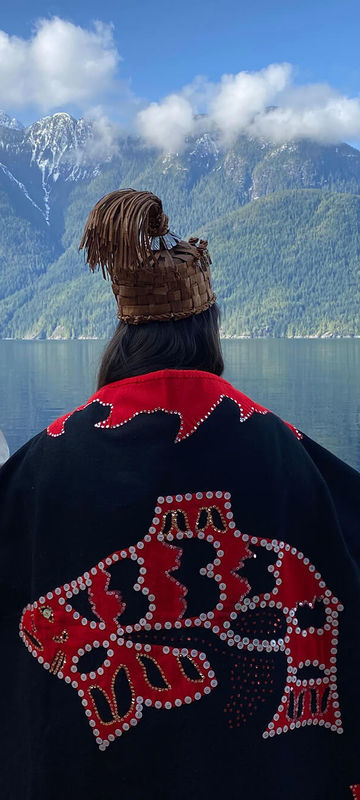Bear watching is one of the most sort after experiences for visitors to Canada, with around 60% of the world’s bear population found there. While chance encounters are possible, putting yourself in the best locations is the best way to ensure success. But it’s more than just the locations of bear watching lodges that make staying at one such a memorable experience. It’s also about the guides.
Meet the amazing guides from three of our favourite wilderness lodges in British Columbia’s Great Bear Rainforest.
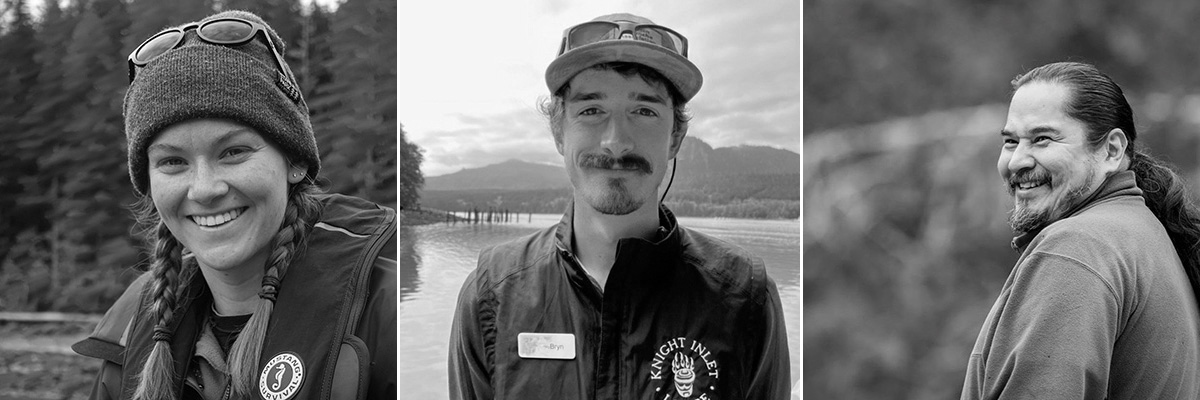
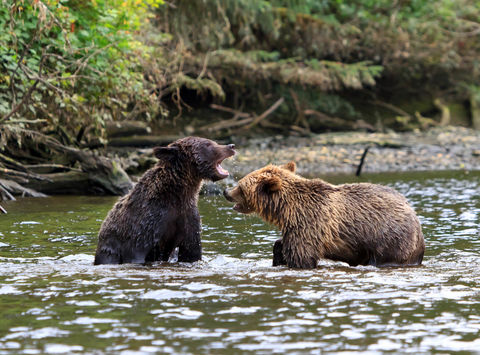
Bryn Mitchell, Knight Inlet Lodge
Most memorable bear encounter?
It was in mating season when there is a lot of interaction between bears. I had just exited my truck which was full of guests on a tour. Immediately I heard a crack in the woods. Then saw a male grizzly come running out behind my truck. It ran past then turned back to look at another male bear that came crashing out. The second male chased it up a hill. Then the first male bear stood up and roared at the chasing bear from high on the hill. This ended the chase and the two went their separate directions.
Best time to see bears?
The spring is my personal favourite. In the spring we find grizzlies descending from their dens to the coastline to forage on sedge near the waterline. This is also the time where the mountains are still covered in snow, which adds to the beauty of the area
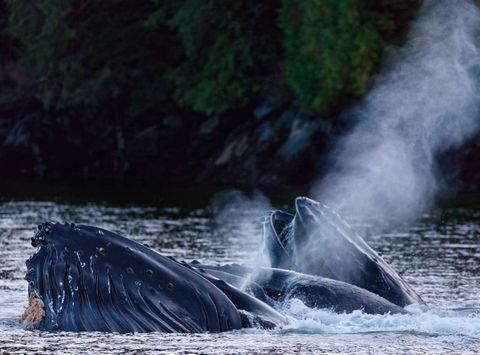
Q3: Grizzlies aside, what are your top five animal sightings?
- The first black bear I saw in the Rocky Mountains while with my grandpa when I was 5.
- A moose and calf in a snowstorm in June in northern BC while tree planting.
- A wild red panda in the Himalayas after searching for one for 7 days.
- A humpback seen lunge feeding in the cove 300 meters from Knight Inlet Lodge.
- 300 dolphins in the middle of knight inlet that surrounded my boat. They were flipping and jumping all around us.
The Great Bear Rainforest in three words
Wet, Remote, Wild.
Best thing about being a guide
Being able to re-experience seeing a grizzly bear for the first time through my guests’ eyes. And the rush of adrenaline and admiration that comes with this experience.
Top tip for guests
Don’t just come for the grizzlies. Come for the entire experience, enjoy the birds, the fish, the trees, the rainy weather. It all comes together to create a remarkable experience. Also enjoy not having internet; disconnect from the human world while you reconnect with the natural world.
Apart from wildlife watching, what else can you do?
The lodge offers a variety of activities including kayaking, hiking and interpretive walks in the forest focused on bear ecology. There is also ping pong.
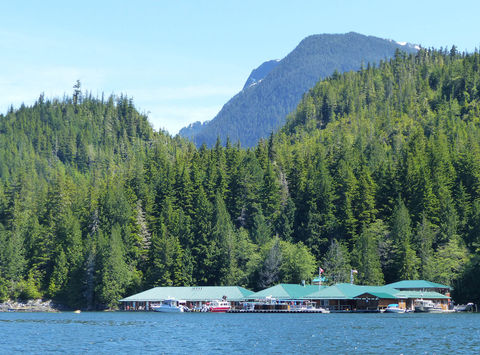
What makes the lodge so special?
The community of people that have worked at the lodge for many years or those who have just started. We are all focused on spending as much time around wild grizzlies with a minimal impact and being connected to this magical place.
How does it embrace minimal impact?
We keep our waste to a minimum at the lodge. All the guides follow the bear management plan. This is a standard of practice that dictates how we behave around the bears to ensure minimal impact and displacement. It was written by bear biologists who have spent time observing boats and people around bears, that information was then put into this document that we all follow.
What’s the essence of the place that you want guests to experience?
When I think of the Great Bear Rainforest I think of mist filled rolling hills and mountains. The rainy days where it is glass calm in the cove and bears can be seen moving through the terrain munching on sedge. The peace and quiet of these days will stick with you for the rest of your life.
How do you support conservation?
A guide’s job is to educate and provide an experience to their guests. In so doing, a guide naturally contributes to conservation by connecting those around them with the natural world. Conservation only happens when people feel connected and aware of the natural world around them. They will then spread the message about why grizzly bears and their habitat are worth protecting
Favourite time of day?
I love the sunrise. It is when bears are quite active and so are the birds. The sun slowly peaks over the hills and illuminates the slopes above.
Tell us about the importance of indigenous culture?
Indigenous people are rooted to the land to a degree not many people can understand. They have lived in some of these places for thousands of years. They have so much wisdom when it comes to how to live alongside the natural world and how to thrive with it. With the climate crisis rearing its head every few days in the news. It’s important for society to shift to a mindset that first nations have had for millennia. We need to learn how to find a balance with nature and not over take our share.
Experience it for yourself: Grizzly Bear Adventure at Knight Inlet »
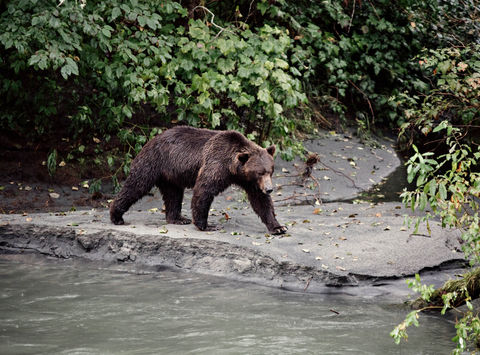
Klemkwateki (Randy) Louie, Klahoose Wilderness Resort
Most memorable bear encounter?
There was a time when I was walking between bear viewing towers and the scout called me on the radio to say he saw a bear 100 meters from me. I stopped, looked around and saw the bear watching the river. He raised his head, sniffed the air and then stood up. He was taller than me. I started talking to him, he looked at me and sat back down.
Best time to see bears?
We see black bears and spring grizzly bears in May and June, but the best time to see grizzly bears is when the salmon run starts. This is from late August, after the first heavy rain, and until mid-October.
Grizzlies aside, what are your top five animal sightings?
- Orca
- Humpback whales
- Elk
- Bobcats
- Beaver
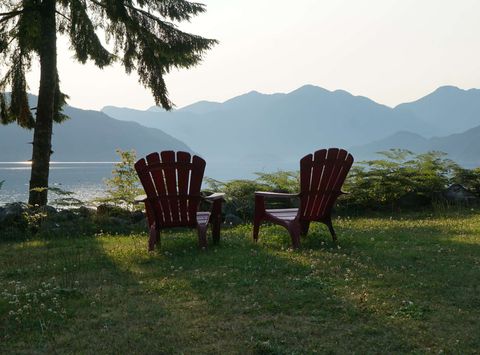
The Great Bear Rainforest in three words?
Paradise. Refreshing. Spiritual
Best thing about being a guide?
Sharing Klahoose stories and history with guests.
Top tip for visitors?
Be prepared for a cultural experience.
Apart from wildlife watching, what else can you do?
Ocean swimming off the dock, paddle boarding, kayaking, boat tours, nature walks, enjoy delicious meals and experiencing First Nations culture.
What makes the lodge so special?
The location in in the Klahoose territory is remote but unbelievable beautiful. Guests will see this beauty though the eyes of our Klahoose first nation through guide tours, songs, drumming, weaving as well as sharing history and stories. Most guests leave here deeply touched and honoured to have had the opportunity to share in such beautiful traditions
How does it embrace minimal impact?
The Klahoose ancestors have managed this legacy of natural resources, honouring and protecting the environment and its inhabitants for millennia. We have recently added, to our off-the-grid resort, a new clean energy system that will triple our energy with storage eliminated carbon turning off our diesel generators. We also give guest reusable water bottles and discourage use of one-use plastics.
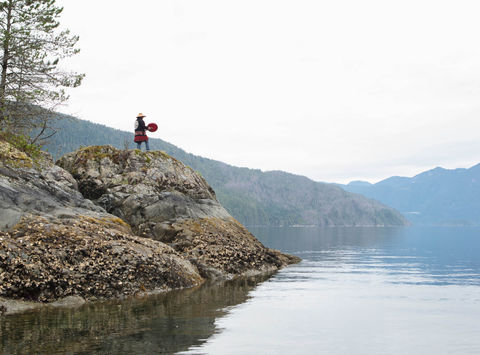
What’s the essence of the place that you want guests to experience?
Connecting with the Klahoose culture though nature and history
How do you support conservation?
Besides, our own clean energy use, we are members of the Commercial Bear Viewing Association. Through each guests stay we collect a conservation fee that goes back directly to bear conservation.
What’s your favourite time of day?
Late morning, seeing momma bears teach their young how to fish in Toba Inlet.
Tell us about the importance of indigenous culture
In our tradition there are 3 times in your life time where you can change your life:
- when you become a young woman or man
- when you lose your parents
- when you get honoured into the long house
Indigenous culture believes that we should all move forward together and the resort offers a connection through shared experiences.
Experience it for yourself: Wildlife and Culture at Klahoose »
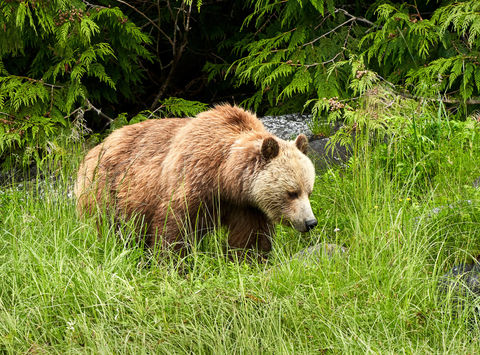
Sylvie Stewart Grantham, Farewell Harbour
Most memorable bear encounter?
In the spring time we tend to have some nice encounters with mums and new cubs. It is one of my favourite times. The mums bring their cubs into the estuaries to feed and I’ve enjoyed a number of special meetings with these gentle creatures showing a little bit of motherly love.
Best time of year to see bears?
Our bear viewing starts in June and goes through October. Of course, many visitors seek to book in August and September to coincide with the salmon runs. The salmon returns have been low over the last 4 years. They are rebounding but it may take a few years for them to recover. So, we’ve been candid with our travel partners that if they are coming for that iconic shot of bears eating salmon, they may wish to consider other bear viewing locations. However, bears are very opportunistic feeders and we are having some nice encounters watching them feed on berries, roots, and sedge in the estuaries. This feeding behaviour happens from late May right through until October so really any time during our operating season is a great time to come!
Grizzlies aside, what are your top animal sightings?
- The orca and humpbacks sightings are phenomenal here in the Broughton Archipelago Marine Park where the lodge is located.
- One of my all-time favourite encounters was watching a mom and calf humpback simultaneously breaching at sunset.
- I’ve also been fortunate enough to have some incredible sightings with playful Dall’s porpoises and pacific white sided dolphins jumping straight up out of the water in the fjords of the Great Bear Rainforest.
- Of course, it’s also always special to see the fleeting dorsal fin of the minke whales as well.
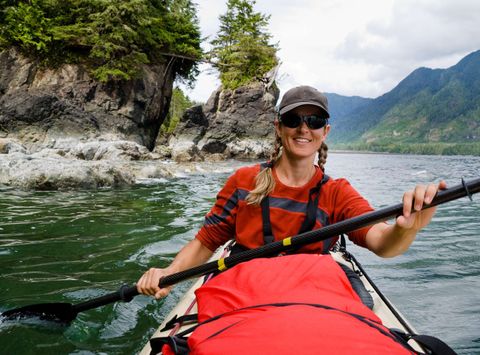
The Great Bear Rainforest in three words?
Abundant. Ancient. Connected.
Best thing about being a guide?
Getting to see our guests’ eyes sparkle when they are moved emotionally by encounters with wildlife. We tend to get so immersed in our virtual worlds nowadays that these emotional encounters really allow people to feel alive and connected with the natural world. That is powerful to witness.
Top tip for visitors?
Come with enthusiasm, flexibility and openness to whatever Mother Nature delivers to you.
Apart from wildlife watching, what else can you do?
I love to knit! I’ve knit all of the other guides their own toques, which is ‘Canadian’ for beanie or wool hat. I also love spending time with my family. I’m also passionate about mycology – the study of mushrooms and enjoy taking guests into the Enchanted Forest behind the lodge to learn about fungi!
What makes the lodge so special?
It is family owned and operated by the McGradys and Brockways and they’ve done an incredible job to make guests and staff alike feel like we’re all part of a big extended family!
How does it embrace minimal impact?
It is challenging having a minimal impact travelling as we do, in boats that consume diesel fuel, this is our biggest environmental impact. However, we have recently completed a third-party carbon footprint (GHG) audit and we are looking at ways we can reduce our footprint through a variety of different mechanisms. We have installed a state-of-the-art inverter/battery bank so we run on battery power for half of the day and we are investigating the purchase of carbon offsets to offset what we cannot eliminate. We also do the simple things – we have implemented a lodge wide recycling program. We also support local conservation efforts financially.
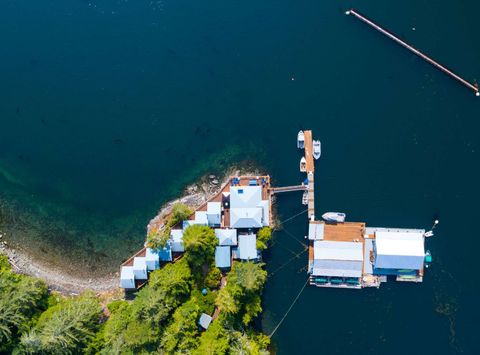
What’s the essence of the place that you want guests to experience?
The essence of this place is about connection to nature. We connect to nature here by using all of our senses. As our world spins faster and faster that ability to slow down and connect with our natural world is requiring more and more of a conscious decision and a conscious effort.
How do you support conservation?
Most of our conservation efforts go towards supporting First Nations-led conservation initiatives. We believe they are the best stewards of their traditional territories, having lived and cared for this region for millennia. This season, for example, we have donated our staff time and our vessels to transporting visitors to the grand opening of a newly constructed cultural and language centre in a remote area of the Great Bear Rainforest. We have also assisted in a recent grizzly bear relocation initiative with the local First Nations guardian watchman program.
What’s your favourite time of day?
Sunsets from the Farewell Harbour Lodge deck are simply spectacular – some of the most beautiful I have ever seen.
Tell us about the importance of indigenous culture
Indigenous people have been here on the land in the Great Bear Rainforest for millennia. They have a connection to this place that is unfathomable – almost woven right into their DNA. The more time we spend here, the deeper our respect becomes for our Indigenous friends and neighbours. We work hard to be good and trusting friends and neighbours – always looking for ways to collaborate and assist. Although we are a non-Indigenous owned company, we seek to honour the Indigenous people who have lived in this region since time immemorial. We travel and conduct our tours in the traditional territories of the Mamalilikulla, Kwikwasut’inuxw Haxwa’mis, Da’naxda’xw Awaetlala, Tlowitsis and ‘Namgis First Nations. Our lodge itself is located in Mamalilikulla First Nation territory and we operate under agreement with them. We embrace the spirit of reconciliation and The United Nations Declaration on the Rights of Indigenous Peoples. Our logo was designed by KWAMKWAMGALIS Jason Taylor. Jason is a First Nations artist descending from the Namgis, Tlowitsis and Mamtagila tribes of Northern Vancouver Island.
Experience it for yourself: Whales and Bears at Farewell Harbour »
Feeling inspired?
The renown of these lodges mean that they book up well in advance, so it’s essential to plan your adventure as soon as possible to get the pick of availability. If you would like to incorporate a wildlife watching adventure into a Canada holiday, get in touch with our Travel Specialists on 01737 214 250, or send an enquiry to start discussing your options.
Other blogs you may like:
























